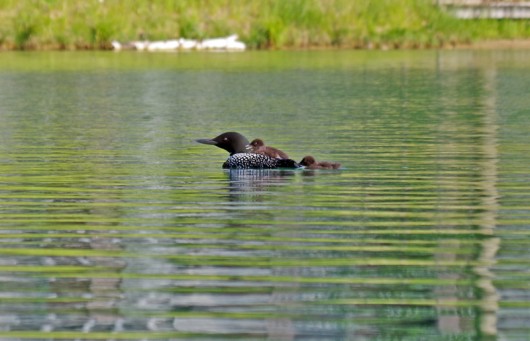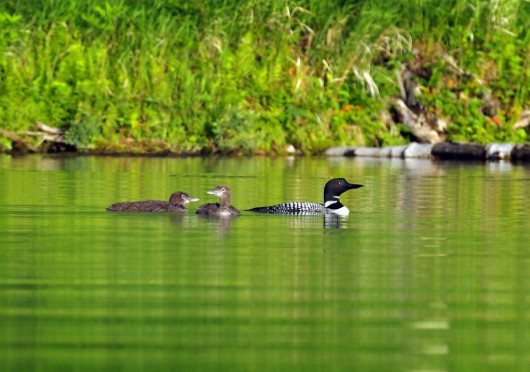Is there any wonder what the loons see in Long Lake? Here’s the view from 200 feet up near our house. August 7, 2017. This is the north section of the lake. That’s Belly Button Island looking like it’s just a tad away from “our” bay. And if your eyes look beyond the island, and turn left, you’d be in Ghost Bay.
Loons are very bad at landings. And they are even worse taker-offers. They beat their wings like crazy, hitting the water, and almost seem to be walking on those long feet of theirs on lift off. And landings aren’t graceful either. They end up skidding to a halt. So a long lake is perfect for the loons. Our lake also has two islands, which is ideal because loons prefer to nest on islands.
Here’s this year’s twins at three weeks.
And here they are just one week later. They still look a bit unpromising. But looks deceive. These guys are already diving for their own food and staying under water for longer and longer lengths of time.
The parents have obviously been feeding them well. Hopefully the twins will be strong and flying well by late October so they can make their flight south.











